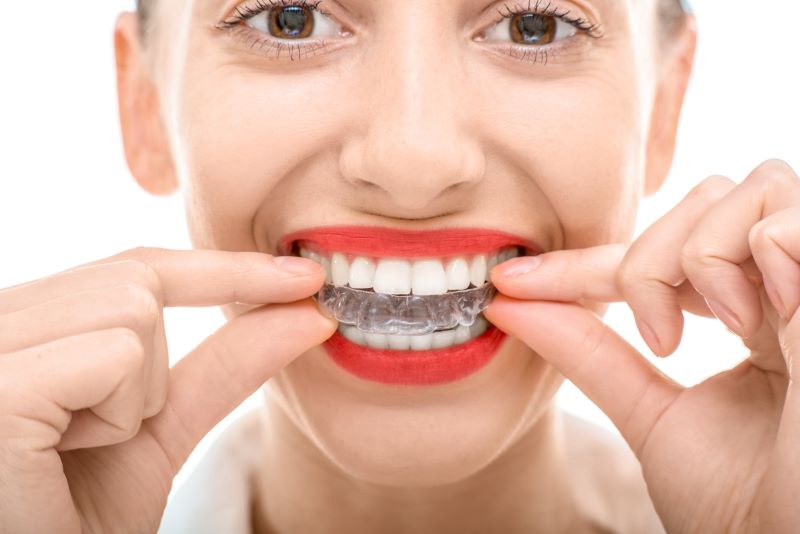Invisalign vs. regular braces in Chicago, which one should you choose? Schedule a FREE INITIAL CONSULTATION OR SECOND OPINION 773-481-2200. Or read on to get some answers.
You have options when it comes to achieving a straight and confident smile. Invisalign and traditional braces are two of those options. While both can effectively align your teeth, they differ in appearance, comfort, maintenance, and treatment duration.
Invisalign vs regular braces we’ll help you decide which treatment is best.
Invisalign: The Discreet Alternative
- Appearance:
- Invisalign: Invisalign aligners are clear plastic and nearly invisible. They are made of smooth plastic and are custom-designed to fit your teeth comfortably. Most people won’t even notice you’re wearing them.
- Regular Braces: Traditional braces consist of metal brackets and wires, which are visible when you smile. They come in various colors, allowing for some personalization, but they’re still noticeable.
- Comfort:
- Invisalign: Invisalign aligners are smooth and comfortable. There are no sharp edges or wires to irritate your cheeks, lips, or tongue. You take them out when you’re eating or brushing your teeth.
- Regular Braces: Braces may initially cause discomfort or soreness as your mouth adjusts to the metal components. You’ll need to be cautious about certain foods that could damage the wires or brackets.
- Maintenance:
- Invisalign: Aligners are easily removable, making maintaining oral hygiene simple. You remove the retainers to brush and floss your teeth as usual without obstructions.
- Regular Braces: Cleaning around braces can be more challenging. Special tools like floss threaders may be required to navigate around wires and brackets. Regular dental check-ups are essential to ensure everything is in order.
- Dietary Restrictions:
- Invisalign: You remove the aligners to eat, so you can eat whatever you want.
- Regular Braces: Certain foods, like hard candies, popcorn, and sticky snacks, should be avoided to prevent damage to the brackets and wires.
- Treatment Duration:
- Invisalign: Treatment duration varies depending on your specific case, but it can be comparable to traditional braces. In some cases, Invisalign treatment may be faster.
- Regular Braces: Traditional braces typically require longer treatment periods, often extending from 18 months to several years, depending on the complexity of the case.
Regular Braces: The Time-Tested Solution
- Effectiveness:
- Invisalign: Invisalign is highly effective for mild to moderate orthodontic issues, including overcrowding, gaps, and some bite issues.
- Regular Braces: Traditional braces can address a broader range of orthodontic problems, including severe misalignments and complex bite issues.
- Predictable Outcome:
- Invisalign: Invisalign uses advanced computer technology to plan and predict your treatment. You can see the expected outcome before you even start.
- Regular Braces: The outcome can be equally predictable with traditional braces, but it may be less visually apparent throughout the treatment.
- Age and Compliance:
- Invisalign: Invisalign is often preferred by adults and older teenagers, who are more likely to comply with wearing the aligners as instructed.
- Regular Braces: Traditional braces can be a better option for younger patients, as parents can ensure compliance and monitor the treatment progress more closely.
Choosing between Invisalign and regular braces ultimately depends on your orthodontic needs, lifestyle, and personal preferences. Invisalign offers a discreet and comfortable option, while traditional braces provide comprehensive solutions for complex cases. Whichever you choose, the goal is the same: a smile that looks and feels better. Consult with one of our top Chicago dentists or our board certified orthodontist to determine the best treatment plan tailored to your unique requirements.
We offer a FREE Initial Consultation and Second Opinion. Call 773-481-2200 or Schedule Online.

